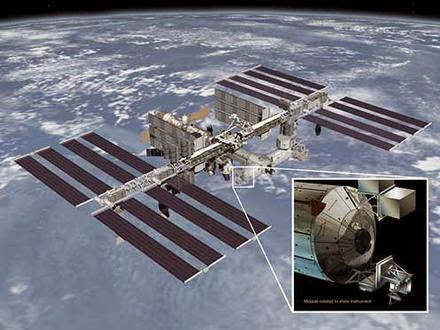The Atmospheric Imaging Assembly on NASA's Solar Dynamics Observatory captured its 100 millionth image of the sun on Jan. 19, 2015.
The dark areas at the bottom and the top of the image are coronal holes, areas of less dense gas, where solar material has flowed away from the sun.
Credit: NASA/SDO/AIA/LMSAL
On Jan. 19, 2015, at 12:49 p.m. EST, an instrument on NASA's Solar Dynamics Observatory captured its 100 millionth image of the sun.
The instrument is the Atmospheric Imaging Assembly (AIA), which uses four telescopes working parallel to gather eight images of the sun, cycling through 10 different wavelengths -- every 12 seconds.
The Atmospheric Imaging Assembly (AIA) images the solar atmosphere in multiple wavelengths to link changes in the surface to interior changes.
Data includes images of the Sun in 10 wavelengths every 10 seconds.
Credit: NASA SDO, Lockheed Martin Solar Astrophysics Laboratory
The Helioseismic and Magnetic Imager extends the capabilities of the SOHO/MDI instrument with continual full-disk coverage at higher spatial resolution and new vector magnetogram capabilities.
Credit: NASA SDO, Lockheed Martin Solar Astrophysics Laboratory
Between the AIA and two other instruments on board, the Helioseismic Magnetic Imager (HMI) and the Extreme Ultraviolet Variability Experiment (EVE), SDO sends down a whopping 1.5 terabytes of data a day.
The Extreme Ultraviolet Variability Experiment measures the solar extreme-ultraviolet (EUV) irradiance with unprecedented spectral resolution, temporal cadence, and precision.
EVE measures the solar extreme ultraviolet (EUV) spectral irradiance to understand variations on the timescales which influence Earth's climate and near-Earth space.
Credit: NASA SDO, Lockheed Martin Solar Astrophysics Laboratory
AIA is responsible for about half of that. Every day it provides 57,600 detailed images of the sun that show the dance of how solar material sways and sometimes erupts in the solar atmosphere, the corona.
In the almost five years since its launch on Feb. 11, 2010, SDO has provided images of the sun to help scientists better understand how the roiling corona gets to temperatures some 1000 times hotter than the sun's surface, what causes giant eruptions such as solar flares, and why the sun's magnetic fields are constantly on the move.
The dark areas at the bottom and the top of the image are coronal holes, areas of less dense gas, where solar material has flowed away from the sun.
Credit: NASA/SDO/AIA/LMSAL
On Jan. 19, 2015, at 12:49 p.m. EST, an instrument on NASA's Solar Dynamics Observatory captured its 100 millionth image of the sun.
The instrument is the Atmospheric Imaging Assembly (AIA), which uses four telescopes working parallel to gather eight images of the sun, cycling through 10 different wavelengths -- every 12 seconds.
The Atmospheric Imaging Assembly (AIA) images the solar atmosphere in multiple wavelengths to link changes in the surface to interior changes.
Data includes images of the Sun in 10 wavelengths every 10 seconds.
Credit: NASA SDO, Lockheed Martin Solar Astrophysics Laboratory
The Helioseismic and Magnetic Imager extends the capabilities of the SOHO/MDI instrument with continual full-disk coverage at higher spatial resolution and new vector magnetogram capabilities.
Credit: NASA SDO, Lockheed Martin Solar Astrophysics Laboratory
Between the AIA and two other instruments on board, the Helioseismic Magnetic Imager (HMI) and the Extreme Ultraviolet Variability Experiment (EVE), SDO sends down a whopping 1.5 terabytes of data a day.
The Extreme Ultraviolet Variability Experiment measures the solar extreme-ultraviolet (EUV) irradiance with unprecedented spectral resolution, temporal cadence, and precision.
EVE measures the solar extreme ultraviolet (EUV) spectral irradiance to understand variations on the timescales which influence Earth's climate and near-Earth space.
Credit: NASA SDO, Lockheed Martin Solar Astrophysics Laboratory
AIA is responsible for about half of that. Every day it provides 57,600 detailed images of the sun that show the dance of how solar material sways and sometimes erupts in the solar atmosphere, the corona.
In the almost five years since its launch on Feb. 11, 2010, SDO has provided images of the sun to help scientists better understand how the roiling corona gets to temperatures some 1000 times hotter than the sun's surface, what causes giant eruptions such as solar flares, and why the sun's magnetic fields are constantly on the move.


















































